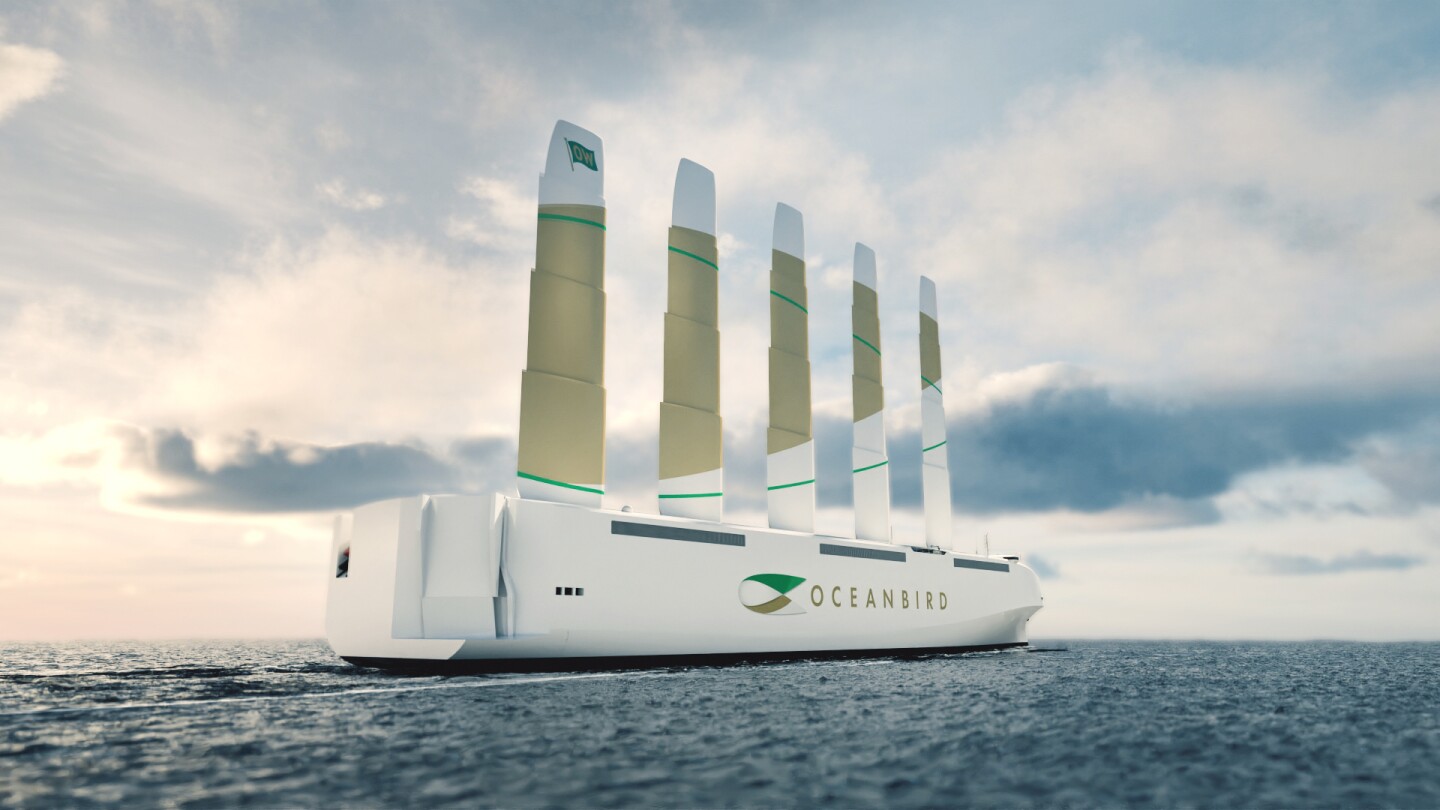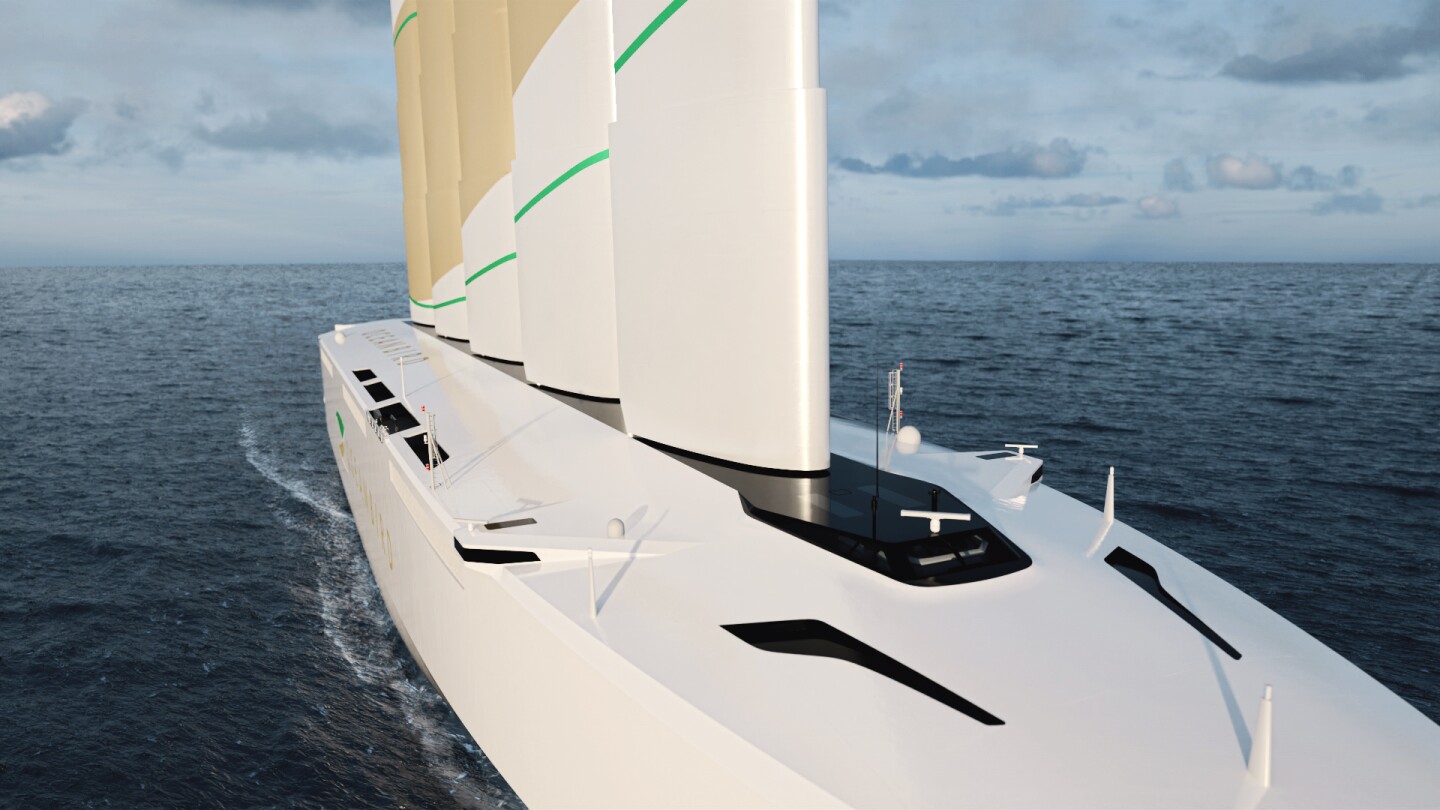
Oceanbird's huge 80-meter sails reduce cargo shipping emissions by 90%
by Loz BlainThe idea of using sails to power a boat is not exactly a new one; indeed, the earliest known depiction of a ship under sail appears on a painted disc found in Kuwait, dated back to somewhere between 5,000-5,500 BCE. Boats themselves, interestingly, appear to be closer to a million years old, and were used by homo erectus long before neanderthals or homo sapiens ever walked the Earth.
Sails propelled humanity around the globe for thousands of years, before being relegated mainly to recreational use over the last couple of hundred years by the development of steam technology and internal combustion engines, among other things, which developed more reliable propulsion across a wider range of conditions and use cases.
Fuel-burning ships have been phenomenally successful, opening up the global trade network we enjoy today, but we may not have seen the end of sails just yet. In response to the increasingly obvious consequences of climate change, a number of companies are working on ways to bring emissions-free sail propulsion back to the cargo shipping world, taking advantage of advanced materials, computer controls and some interesting new designs to take performance and speed to the next level.

The latest concept is the Oceanbird, a giant Pure Car and Truck Carrier capable of transporting up to 7,000 cars at an average speed of 10 knots on a North Atlantic crossing. That's not quite as quick as a conventional ship; you're looking at around 12 days instead of the typical 8, but the Oceanbird's four colossal 80-meter (260-ft) high extendable wing sails promise to reduce emissions by as much as 90 percent.
The wing sails, built in metal and composites, can be retracted down to around 20 m (66 ft) when required, keeping them safe in stormy conditions and letting the ships get under bridges when they need to. While the Oceanbird project team sees the sails as providing the vast majority of the ship's power, there will also be engines fitted for maneuvering close to land and ports, and to get the ship out of a pickle in an emergency.
The Oceanbird is a three-way project between well-established shipbuilders Wallenius Marine, which initiated the project, Swedish research institute SSPA and the Royal Institute of Technology in Stockholm.

The team has built a 7-m (23-ft) scale model of the ship, which has already been tested in open water, and will continue sea trials over the coming few months. A production-ready design should be complete and ready for orders, they say, by the end of 2021, and Wallenius expects to deliver the first customer vessel by the end of 2024.
The project team says it will be the world's largest sailing vessel when it launches, at some 200 m (656 ft) long and 40 m (131 ft) wide, and of course the technology will be applicable to many sorts of large ships, including things like cruise ships. It's unlikely to replace container ships, where the entire deck surfaces need to be totally flat to carry hundreds upon hundreds of stacked containers.
The commercial shipping industry contributes some 2.5 percent to the world's CO2 emissions, and is responsible for 18-30 percent of nitrous oxides released into the atmosphere, as well as 9 percent of sulphur oxides thanks to cheap, dirty fuel. It's clearly an area for improvement, and around the world the industry is facing increasingly strict regulations.
If these regulations do their job and begin cleaning up ship emissions, it'll be interesting to see the effect that sulphur scrubbing technology and the move away from dirty fuels will have on the cost of getting things from A to B. The idea of a ship that runs predominantly on wind power, using a small fraction of the fuel but taking 50 percent longer to get where it's going, might just start to stack up financially, even if initially it might mainly be a way for companies to lower the average emissions of their fleets.
It's certainly an attractive thought: a giant, heavy-polluting industry moving forward by going back to the technology that moved us all over the world long before human-driven climate change loomed so menacingly over our future. We look forward to hearing how this project develops. Check out a rendered video below.
Source: Oceanbird